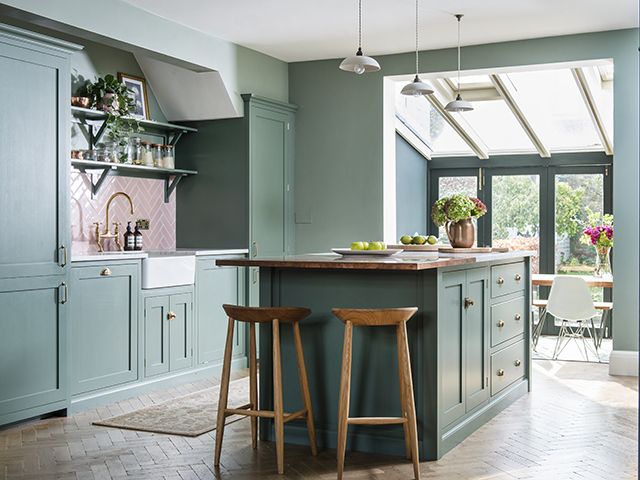In today’s digital age, it’s easy to overlook the power of a well-designed business card. But as a financial advisor, you know that trust and credibility are crucial in your industry. So, how can you create a business card that exudes professionalism while incorporating a touch of modernity? It all comes down to finding the right balance between classic design elements and subtle modern icons. But where do you begin? Let’s delve into the key elements and strategies that can help you design classic business cards that inspire trust, with a contemporary twist.
The Importance of Classic Business Cards in the Digital Age
In today’s digital age, classic business cards still hold immense importance for financial advisors. It may seem counterintuitive to rely on physical cards when so much of our communication is done online, but the traditional business card remains a powerful tool for establishing trust and making a lasting impression.
One of the key reasons why classic business cards are still relevant in the digital age is their tangible nature. When you hand someone a business card, it creates a physical connection that cannot be replicated through virtual means. It shows that you are serious about your profession and value personal connections. In a world where so much communication is done electronically, receiving a physical card can make a significant impact.
Another advantage of classic business cards is their versatility. You can easily customize them to reflect your personal brand and style, allowing you to stand out from the competition. Whether it’s through the use of high-quality paper, unique designs, or creative finishes, a well-designed business card can leave a lasting impression on potential clients.
Furthermore, classic business cards provide a sense of professionalism and legitimacy. When you hand out a well-crafted card, it demonstrates that you take your profession seriously and are committed to providing excellent service. In an industry where trust is paramount, having a physical representation of your business can help instill confidence in potential clients.
Elements of Trust-Inspiring Classic Business Card Design
If you want to create a classic business card design that inspires trust for financial advisors, there are some key elements you should consider incorporating. These elements will help convey professionalism and build confidence in potential clients. After all, a well-designed business card can make a lasting impression and serve as a reminder of your expertise and reliability as an advisor. So, here are a few things to think about when designing a trust-inspiring classic business card:
- Keep it clean and professional: A simple and organized layout will convey professionalism and attention to detail. Opt for a classic font and make sure all the information is easy to read.
- Choose high-quality materials: Using a thick, premium cardstock will give your business card a luxurious feel. This will leave a strong impression and give the perception of high-quality service.
- Be consistent with your branding: Incorporate your company’s logo and colors to create a cohesive and recognizable brand image. This will help clients associate your business card with your company and build trust over time.
- Include relevant contact information: Make sure to include your name, title, phone number, email address, and website. It’s important to ensure that all the information is accurate and up to date. This will give potential clients confidence in your professionalism and availability.
Incorporating Subtle Modern Icons for a Contemporary Touch
To give your classic business card a contemporary touch, consider adding subtle modern icons. These icons can add style and keep your design up-to-date. They are also appealing to a younger, tech-savvy audience and can help convey professionalism and expertise. When choosing modern icons, keep it simple and relevant. Opt for widely recognized icons associated with the financial industry, like a dollar sign for finance or a graph for investments.
Incorporating modern icons into your metal business cards design serves multiple purposes. They act as visual cues that quickly communicate your services and expertise. For example, a briefcase icon can represent financial planning, and a handshake icon can symbolize trust and collaboration. Modern icons also make your business card visually appealing and memorable. By incorporating them subtly and tastefully, you can stand out without looking gimmicky or unprofessional.
When using modern icons, make sure they fit the overall design scheme of your business card, including the font, color palette, and layout. Use them sparingly to avoid overwhelming the card with too many visual elements. Remember, the goal is to enhance the design, not overpower it.
While modern icons add a contemporary touch, they should not overshadow the main purpose of your business card – building trust and credibility. Strike a balance between modernity and professionalism. By incorporating subtle modern icons, you can create a visually appealing and trust-inspiring business card that showcases your expertise in the financial industry.
Choosing the Right Colors and Fonts for a Professional Look
For a professional and polished look, it’s important to carefully choose the right colors and fonts for your business card design. The colors and fonts you select can evoke specific emotions and perceptions in your audience, so it’s crucial to make strategic choices that align with your brand and the image you want to convey. Here are some tips to help you choose the perfect colors and fonts for a professional look:
- Colors: To convey trust, reliability, and professionalism, consider using classic colors like navy blue, black, or gray as the primary color for your business card. These colors are timeless and give off a sense of sophistication. You can also incorporate a secondary color that complements the primary color to add visual interest without overwhelming the overall design.
- Fonts: Keep it simple when it comes to fonts. Opt for clean and easily readable fonts that exude professionalism and credibility. Popular choices for business cards are sans-serif fonts like Arial or Helvetica, as they are modern and easy to read. Avoid using decorative or script fonts, as they can be difficult to read and may not convey a professional image.
- Contrast: Good contrast between the text and background color is essential for readability. If you choose a dark background color, use a light-colored font, and vice versa. This will ensure that your contact information is easily legible and looks professional.
- Consistency: Lastly, maintain consistency in your choice of colors and fonts across all your marketing materials, including your website, email signature, and social media profiles. Consistency builds trust and reinforces your brand identity.
Printing and Paper Selection Tips for High-Quality Business Cards
Creating high-quality business cards requires careful consideration of printing techniques and paper selection. These elements play a crucial role in shaping your brand’s professional and trustworthy image. By choosing the right printing company and paper materials, you can leave a lasting impression on your clients and potential partners. Here are some tips to help you make the best choices for your business cards.
First, it’s important to find a reputable printing company that specializes in high-quality printing. Look for a company that uses advanced printing technology and offers a variety of options like embossing, foil stamping, or spot UV coating. These techniques add elegance and sophistication to your business cards, making them stand out from the rest.
Next, pay attention to the paper selection. Opt for thick, premium quality paper that not only feels substantial but also has a professional finish. Consider papers with a smooth or subtle texture for a tactile element. Matte or satin finishes are often preferred for a sophisticated look, while glossy finishes can provide a vibrant and eye-catching appearance.
Don’t forget to consider the color of the paper. White or off-white paper is a classic choice that exudes professionalism and simplicity. However, you can also explore other colors that align with your brand identity and target audience. Just ensure that the paper color complements the overall design and doesn’t overshadow the information on the card.


